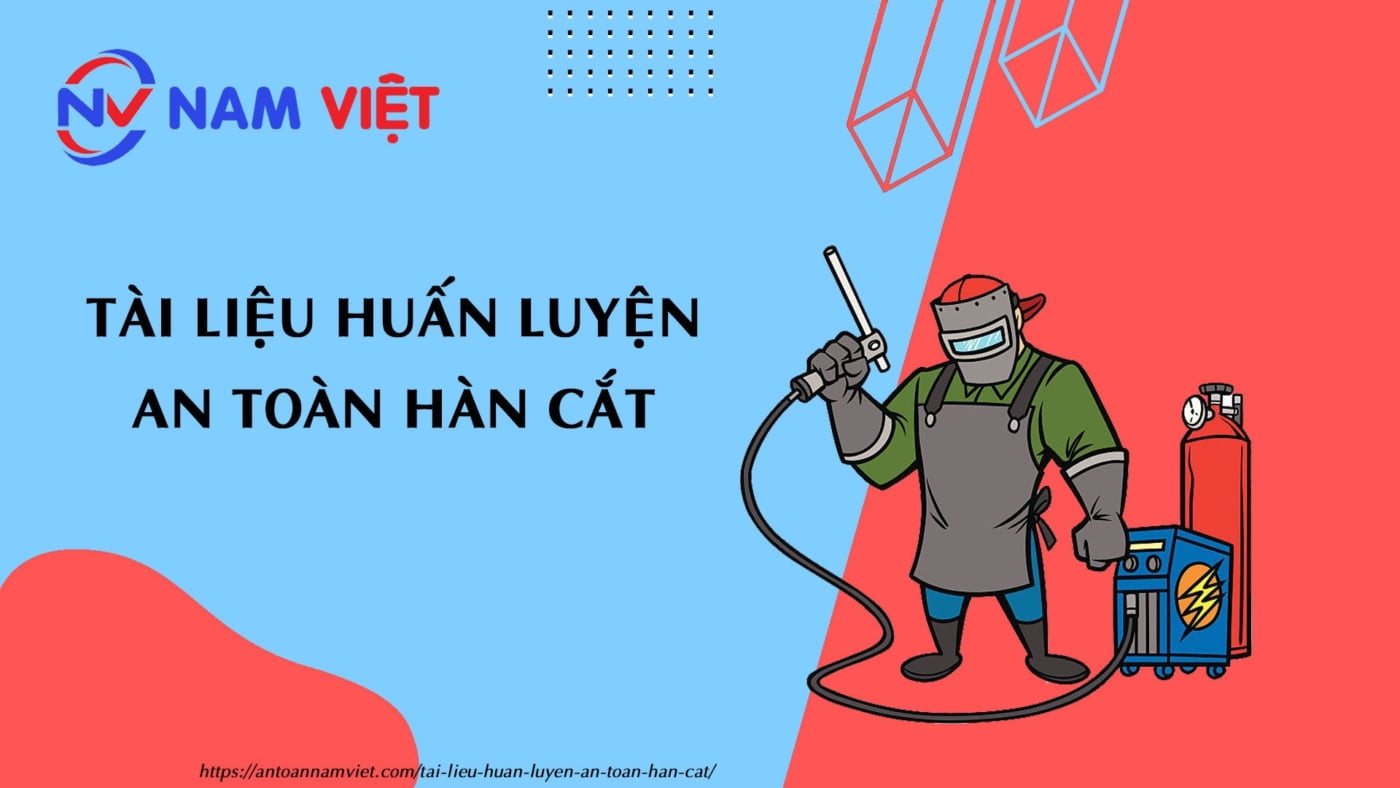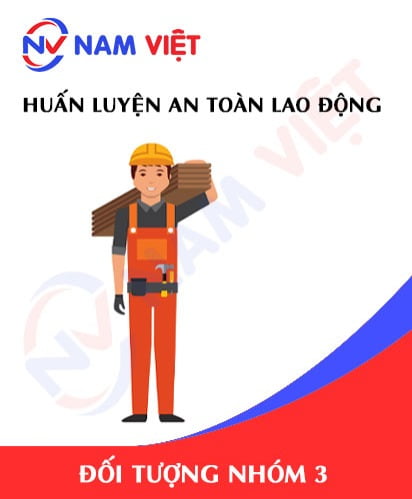Safety Document Group 3
Occupational Safety Training Document for Welding and Cutting
DOWNLOAD THE OCCUPATIONAL SAFETY DOCUMENTATION SUITE (6 GROUPS, OVER 300 PROFESSIONS)
The training course material for occupational safety training in the welding and cutting industry helps workers equip themselves with safety knowledge and prevent hazards when welding metal pieces together or cutting them.
1. General Introduction to Welding and Cutting Safety Documents
- Occupational safety during the process of welding and cutting metal has become a noteworthy issue as many fires and explosions have been caused by violations of occupational safety principles at welding and cutting facilities.
- Equipping welders at welding and cutting facilities with professional knowledge of techniques, procedures, as well as knowledge of fire prevention and fighting (FPF) is essential to ensure a safe working environment, minimize fires and explosions, and above all, ensure that workers are always conscious of protecting themselves and maintaining the highest level of safety.
2. What is Metal Welding and Cutting?
- During the metal welding and cutting process, workers use a high-temperature flame to melt metals and join them together according to a standard, which is called welding.

- If a higher temperature flame is used to melt metal plates or bars into plates or bars of the required size, or when dismantling interconnected metal structures, it is called cutting.
3. Combustible Materials
- The flame of combustible gases can use acetylene, liquefied petroleum gas pre-filled in gas cylinders along with oxygen cylinders. To use it, only a specialized device called a welding torch is needed.
- In addition to using acetylene or liquefied petroleum gas, the electric welding method is also used.
4. Temperature for Welding and Cutting
- The temperature at the core of the flame reaches up to 30,000°C, and the temperature of the weld is around 17,000°C – 18,000°C. During the metal welding and cutting process, sparks flying around can easily cause a fire when they come into contact with combustible materials.
- When high-temperature molten metal particles (ignition temperature around 2500°C to 4000°C) come into contact with flammable materials such as fabric, paper, foam mattresses, etc., a fire can easily start. If the fire is not detected and dealt with in time, it will grow strong, become a large fire, and cause extremely serious consequences.

5. Hazardous Factors
- Arc flash causing corneal burns
- Hot weld material can cause burns
- High risk of fire
- Risk of electric shock
- Generation of toxic gases and dust when burning welding material
6. Basic Safety Measures
- Welders must fully meet the requirements for welding, such as: professional certification, health, training, and be fully equipped with safety equipment…etc.
- Electric welding machines must be grounded or have protective neutral connection.
- Check before welding: The electrical system serving the electric welding machine must be safe.
- Check the condition of gas hoses, gas cylinders, safety mechanisms, pressure regulators, flashback arrestors; the tightness of pipe connections and connections between pipes and equipment; clear all flammable materials within a 5m radius of the welding position.
- The distance between gas cylinders and the welding position should be 10m.
- Do not use iron poles or grounding plates as the negative terminal when welding.
- When welding or cutting in enclosed compartments, tanks, or rooms, ensure a wind speed of 0.3 – 1.5 m/s.
- To ensure safety, clean or take measures to clean equipment, tanks, cellars, etc., that contain flammable or explosive substances before welding. It is forbidden to weld or cut equipment under pressure; equipment containing flammable or explosive substances.
- When welding in areas with a high risk of electric shock, portable lighting should use a low voltage of 12V.
- When gas welding on the move, do not wrap the gas hose over your shoulder; do not open or close the gas cylinder valve too quickly.
- Provide shielding to protect those nearby; have a system to remove harmful fumes and gases for fixed welding positions.
7. Fire Safety Measures for Welders
- Prepare and be fully equipped with all types of personal protective equipment (welding glasses, shoes, gloves, etc.)
- Keep the work area tidy, check the availability of water, sand, and fire extinguishers provided for the welding area.
- Check the condition of gas cylinders, welding torches, and related items before use.
- With specific measures and a sense of responsibility when organizing metal welding and cutting, fire and explosion incidents will surely not occur, and there will be no unpredictable damages or disasters like those that have happened.

8. Precautions in Storage and Transportation
- Pay attention to the expiration date of gas cylinders; only use cylinders that are within their expiration date.
- Use specialized vehicles for transporting gas cylinders; limit manual transport. Do not drag or roll them horizontally; cylinders can only be rolled in an inclined position.
- Protect cylinders from impact, being cut, or dropped.
- Do not use gas cylinders as rollers or supports.
- Cylinders must be clearly marked with the type of gas. Do not use if the contents are unknown.
- Mark empty cylinders, classify them, and store them separately.
- The storage area for gas cylinders must be well-ventilated. Do not store oxygen cylinders with flammable gas cylinders or other oxidizing substances.
- Do not let gas cylinders touch electrical wires or heat sources to prevent the risk of fire and explosion.
9. Precautions When Using Gas Cylinders
- To ensure metal cutting safety, gas cylinders must be placed in an upright and securely fixed position.
- Open the cylinder valve slowly by hand. If it cannot be opened, return the cylinder and do not attempt to open it with other tools.
- The pressure regulator and pressure gauge must be suitable for the type of gas and the pressure in the cylinder. Users must not repair the pressure regulator themselves.
- Do not let the cylinder come into contact with flames, molten metal, hot gas, electrical wires, or sparks.
- Do not let oxygen cylinders get contaminated with oil or grease.
- Do not use oxygen as a substitute for compressed air or nitrogen when testing pipelines or using in vehicles.
- For C2H2 cylinders, do not open the valve more than 1.5 turns.
- Do not connect one oxygen cylinder to two flammable gas cylinders by using a T-fitting on the gas supply line.
- Stop using a cylinder if it leaks, close the cylinder valve immediately, move the gas cylinder to a well-ventilated area, and inform personnel.
10. Safety Precautions for Gas Metal Welding and Cutting
- Pay attention to the hose: it should not be too long or twisted. Protect it from being crushed or run over.
- Do not patch leaks or holes. It must be cut out or replaced.
- Periodically inspect the hose. Store it carefully when not in use.
- Open the oxygen valve first, then the flammable gas valve when lighting the torch to prevent flashback.
- Protect the hose carefully from sparks, grease, and welding slag.
- Do not let the welding or cutting torch get too hot to prevent flashback.
- When stopping welding or cutting for a long time: close the cylinder valves, bleed all excess gas from the hoses, and loosen the adjustment screws on the regulator.
– Close the regulator valve when changing the torch; absolutely do not bend the hose.
11. Safety for Electric Metal Welding and Cutting
Prevent hazardous risk factors such as: arc flash, molten weld material, toxic gases, metal dust, and electric shock with the following measures:
- Wear appropriate gloves and protective gear. Keep clothing clean, free of oil, grease, or flammable substances.
- Do not keep flammable materials in the work area. If they must be present, they should be covered with a fire-resistant sheet and monitored throughout the welding process.
- Carefully inspect the area after finishing work. Regularly inspect and maintain the welding machine and electrodes.
Ventilate the work area to avoid toxic fumes. Workers must be fully equipped with protective equipment to ensure metal welding and cutting safety and prevent potential risks.


